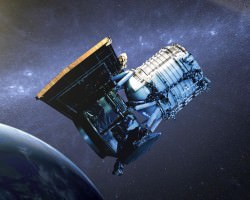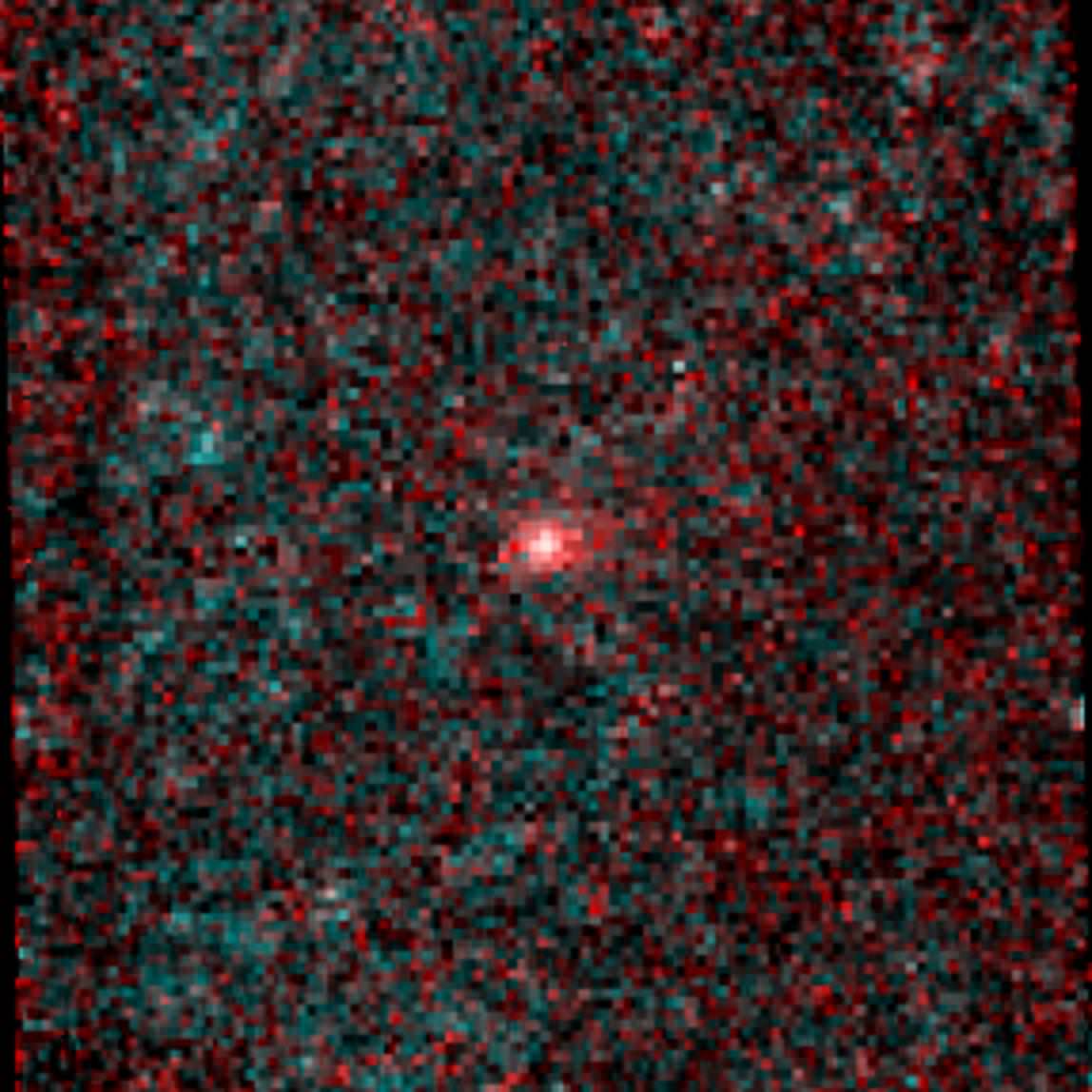NASA’s NEOWISE mission — formerly known as just WISE — has identified the first comet of its new near-Earth object hunting career… and, according to mission scientists, it’s a “weirdo.”
In its former life NASA’s WISE (Wide-field Infrared Survey Explorer) spacecraft scanned the entire sky in infrared wavelengths. It helped discover the galaxy’s coldest stars, the Universe’s brightest galaxies, and some of the darkest asteroids lurking in the main asteroid belt between Mars and Jupiter… as well as closer in to Earth’s neck of the woods.
After exhausting its supply of liquid coolant needed to shield itself from its own radiating heat, in 2011 WISE was put into a state of hibernation. It was awoken last year and rebranded NEOWISE, and set upon the task of locating unknown objects with orbits in the proximity of Earth’s.

To date several new asteroids have already been found by NEOWISE, and on February 14, 2014, it spotted its first comet.
“We are so pleased to have discovered this frozen visitor from the outermost reaches of our solar system,” said Amy Mainzer, NEOWISE principal investigator at JPL. “This comet is a weirdo — it is in a retrograde orbit, meaning that it orbits the sun in the opposite sense from Earth and the other planets.”
Designated “C/2014 C3 (NEOWISE),” the comet was 143 million miles (230 million km) away in the image above — a composite made from six infrared exposures. That’s 585 times the distance to the Moon, or about the average distance between the Earth and Mars.
The tail of the comet NEOWISE extends about 25,000 miles (40,000 km) to the right in the image.
Overall, C/2014 C3 (NEOWISE) was spotted six times before it moved out of range of the spacecraft’s view. The comet has a highly-eccentric 20-year orbit that takes it high above the plane of the Solar System and out past the orbit of Jupiter. Technically, with a perihelion distance greater than 1.3 AU, comet C/2014 C3 does not classify as a near-Earth object (and its orbit does not intersect Earth’s.) But it’s still good to know that NEOWISE is looking out for us.
Read more on JPL’s NEOWISE site here, and see details on the comet’s orbit on the Minor Planet Center’s website here and from JPL’s Small-Body Database here.
Source: NASA/JPL


What else is odd about this comet? Am wondering about large scope follow up observations, spectroscopy in particular? Is the strange orbit the result of a cometary and/or asteroid collision? Or is this comet an interloper from interstellar space? In either case I’d like to know it’s make up.
Too bad NASA doesn’t have a multipurpose explorer on the launch pad 24/7 for objects of opportunity like this. Back in the days of the ‘cold war’ we had dozens of suitable rockets in silos ready for launch at a moments notice, so it’s not that it couldn’t be done?
If it is an interstellar comet, there might be ways of telling. It might have isotope ratios different to the rest of the Solar System.
Another way might be to do a bunch of computer simulations of interstellar orbit trajectories and see whether it’s plausible to think Jupiter could scatter one and put it into a similar orbit that this new comet has.
I can see where an encounter with one of the gas giants might have sent this comet into it’s odd orbit… yes.
For sure. For one object to capture another, you need the help of a third. Jupiter’s the only planet with enough clout to do the job.